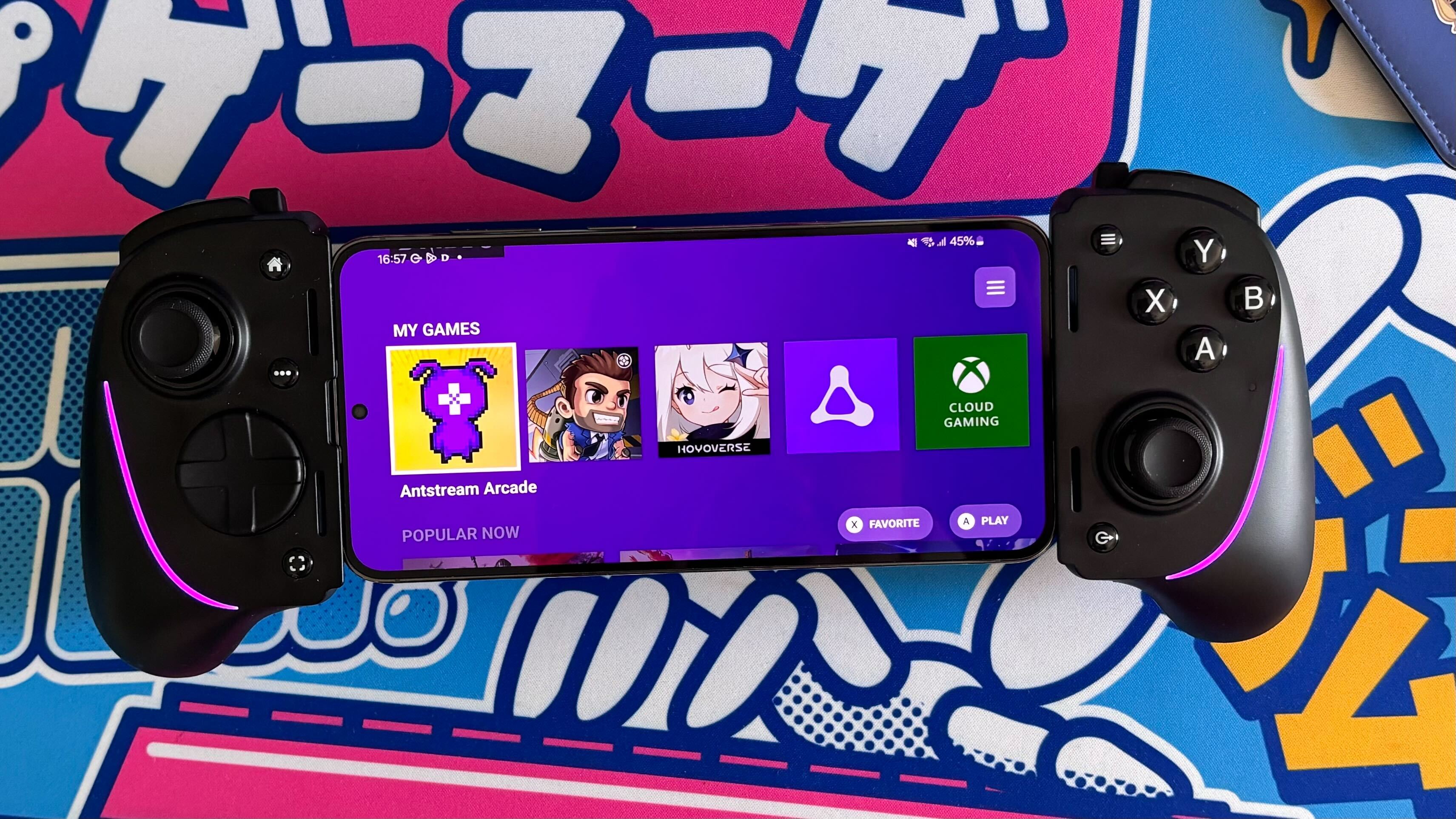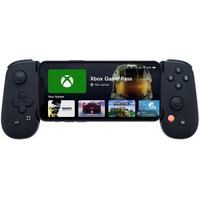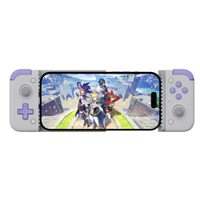TechRadar Verdict
It might be expensive, but full-size controls, incredibly comfortable grips, and great software put the Razer Kishi Ultra firmly above the competition.
Pros
- +
Responsive, console-quality buttons and thumbsticks
- +
Incredibly comfortable, full-size grips
- +
Punchy directional haptics
- +
Eye-catching RGB lighting
- +
Brilliant software
Cons
- -
Very bulky
- -
Currently lacks haptics on iOS
Why you can trust TechRadar
One-minute review
The Razer Kishi Ultra is quite simply the best mobile controller on the market. It offers an unparalleled portable gaming experience thanks to its supremely comfortable full-size grips, smooth thumbsticks and Hall effect triggers, gorgeous mechanical buttons, and an abundance of high-end features like customizable RGB lighting and punchy haptics.
When paired with an iPad Mini or compatible big-screen mobile phone, the Razer Kishi Ultra can give many of the best handheld consoles a serious run for their money. It’s absolutely perfect for all kinds of native mobile titles from retro favorites like Sonic the Hedgehog to recent hits such as Honkai: Star Rail and Call of Duty: Warzone Mobile. It also works well with a range of game streaming services, not to mention a selection of console emulators, making it easier than ever to enjoy your favorite games on the go.
Its excellent companion app even offers a handy virtual controller mode that ensures compatibility with software that doesn't otherwise offer dedicated mobile controller support - an excellent inclusion that adds even more value to the overall package. The Razer Kishi Ultra might be expensive compared to much of the competition, but it’s well worth splashing out on if you won’t settle for anything but the best.
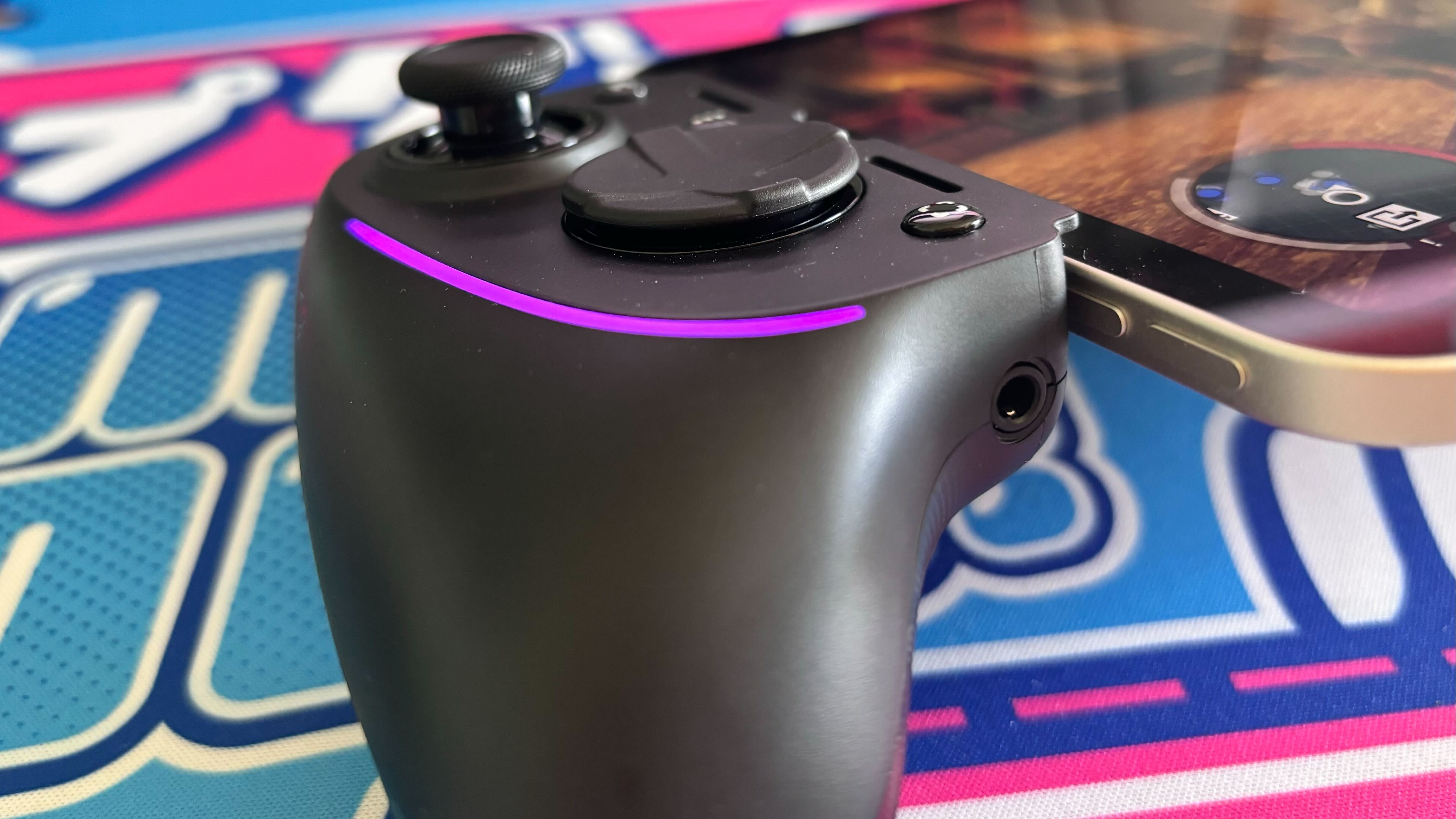
Price and availability
- $149.99 / £149.99 / AU$269.95
- Available via Razer and other retailers
- More expensive than most mobile controllers
There’s no getting around the fact that the Razer Kishi Ultra is expensive. At $149.99 / £149.99 / AU$269.95, it costs much more than competitors like the Backbone One which is priced at $99.99 / £99.99 / AU$179. That said, the Razer Kishi Ultra offers far superior controls which I believe justifies the added cost.
Things become a little less straightforward when you compare the Razer Kishi Ultra to the Nintendo Switch Lite, though. The Razer Kishi Ultra is only $50 / £50 / AU$60 less than the Nintendo Switch Lite and, while the Nintendo Switch Lite is less comfortable to use, it is easier to transport and boasts compatibility with all of the best Nintendo Switch games. Your decision between the two is ultimately going to come down to the types of games that you enjoy. If you want a new way to play your favorite mobile titles, the Razer Kishi Ultra is simply unbeatable.
Specs
Price | $149.99 / £149.99 / AU$269.95 |
Dimensions | 9.63 in x 4.36 in x 2.53 in |
Weight | 0.59 lbs / 266 g |
Connection type | Wired (Type-C) |
Compatibility | iPhone 15 Series, iPad Mini, Android |
Software | Razer Nexus App (iOS / Android) |
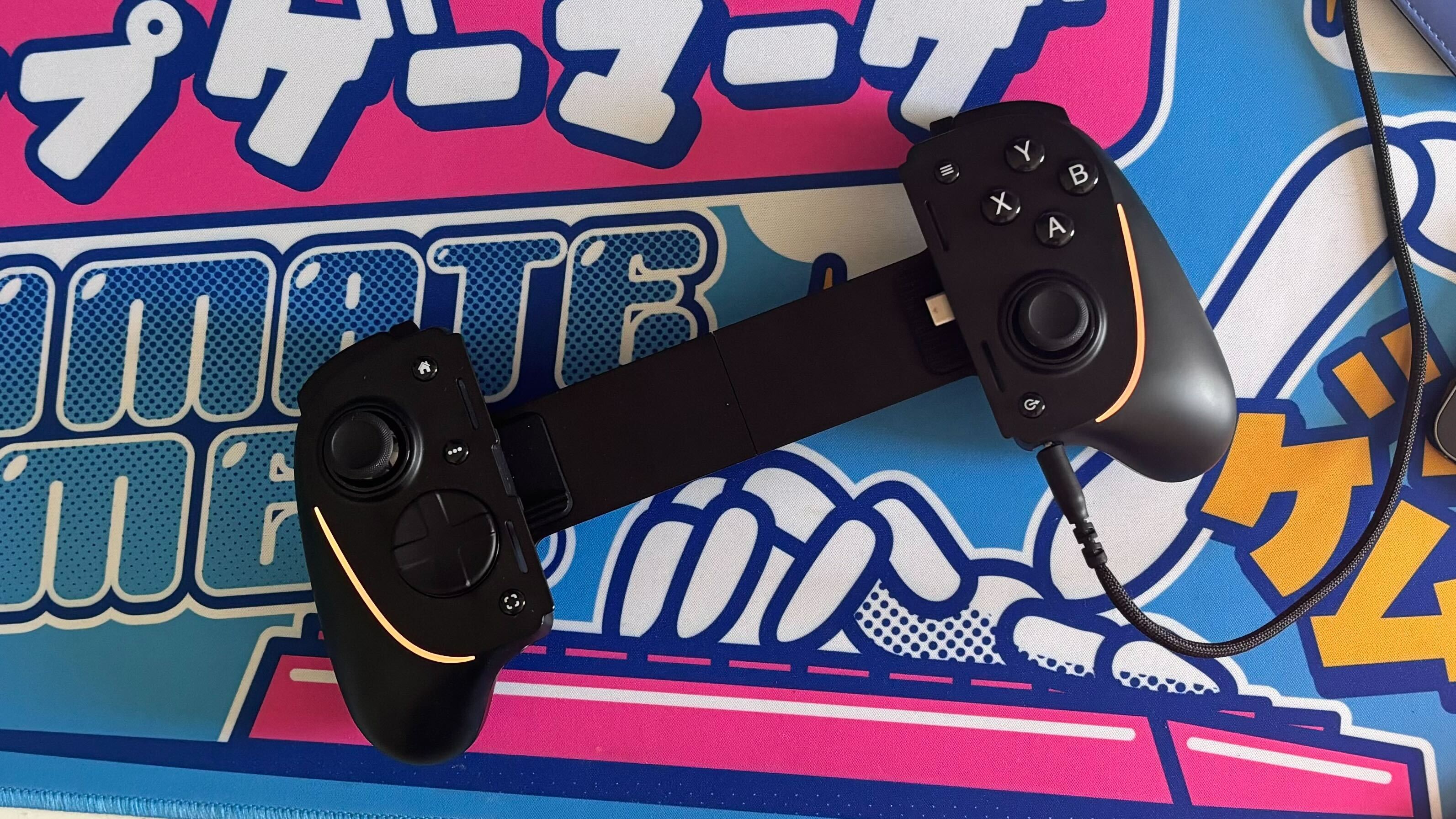
Design and features
The design of the Razer Kishi Ultra is effectively a cross between the Razer Wolverine V2 Chroma and a traditional extending mobile controller like the Razer Kishi V2. It features two sides of a full-size controller that sandwich a spring-loaded back that can extend to accommodate a wide range of devices. Three sets of rubber cushions, which can be slotted into both sides of the spring-loaded back, are included in the box, offering a small degree of customizability when it comes to the fit around your device.
The controller attaches to your phone or tablet through a USB Type-C connector, which is located on the right-hand side. In addition to the iPhone 15 Series and Android phones, the Razer Kishi Ultra can fit a 6th-generation iPad Mini and a variety of small Android tablets. This is quite rare given the tiny size of most mobile controllers and means that the Razer Kishi Ultra is a brilliant match for iPad Mini owners, especially those who want to enjoy the many controller-compatible titles found on Apple Arcade.
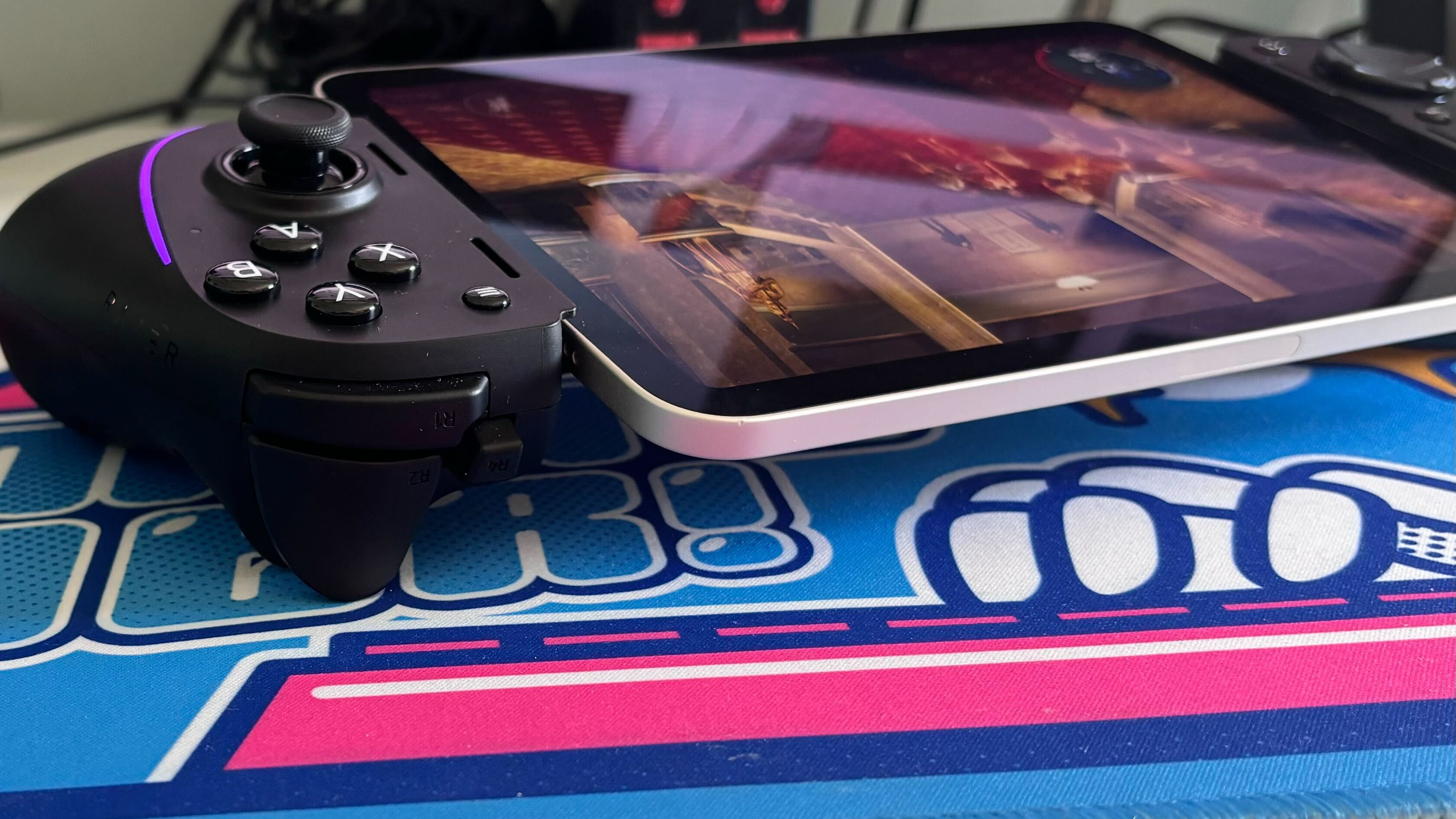
The grips themselves are constructed of a quite thick, robust plastic with a pleasant grippy texture on their undersides. The face buttons use Razer’s Mecha-tactile switches, which are extremely responsive and very pleasantly clicky. The same switches are used for the two small customizable inputs, which are located on the top of the controller right next to full-size Hall-effect triggers and large shoulder buttons. They are also used for the clicky D-pad, which features a very thin and slightly concave design.
The thumbsticks of the Razer Kishi Ultra are full-size and positioned asymmetrically. While they unfortunately do not make use of Hall effect technology, they do both feature an “anti-friction ring” that Razer claims will enhance durability. While I have yet to see whether they will stand the test of time, I found that they were very smooth and still a huge upgrade compared to the stubby, awkward thumbsticks of the Backbone One. The controller also features a standard home button, a menu button, an options button, a screenshot button, and a unique Razer Nexus button - which opens the Razer Nexus app.
A small strip of RGB lighting also runs down the side of each grip. It’s bright and very eye-catching, lending the entire controller a more premium look. This is in addition to a small indicator LED on the right-hand side of the controller, which is mainly used to show a successful connection during the quick setup process. In terms of ports, on the bottom of the controller you will find a 3.5mm jack, which can be used to connect a wired gaming headset or a pair of the best gaming earbuds, and a USB Type-C port.
In addition to acting as a charging passthrough, allowing you to charge your device while you play, the Type-C port can be used to connect the Razer Kishi Ultra to a PC where it functions as a standard wired controller - though a cable to do so is not included in the box.
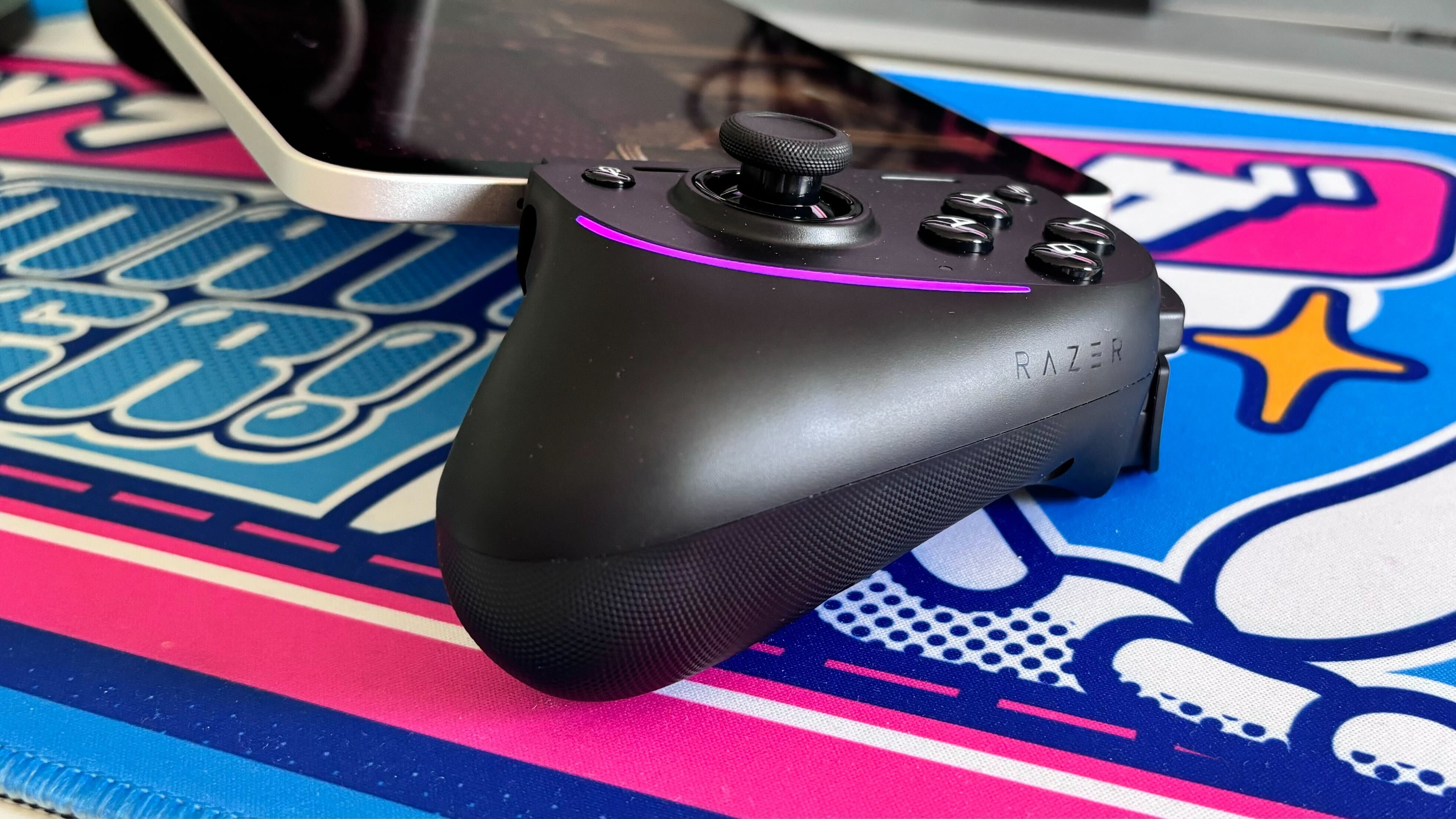
Performance
The Razer Kishi Ultra is by far the best-performing mobile controller that I have ever tested. The high quality of its build is apparent right out of the box thanks to the delightfully smooth black plastic and the controller’s reassuring heft. Although it makes this mobile controller particularly difficult to transport, its large size is easily its best asset as it offers enough room for full-size controls. The thumbsticks are an absolute dream, finally offering a mobile controller experience that feels truly console-quality. The same can be said of the buttons, which are well-positioned and almost identical in size to those found on the Xbox Wireless Controller.
I first tested the Razer Kishi Ultra by clasping it around an iPad Mini and was absolutely blown away. I sampled a range of Apple Arcade titles, including the recently added Dicey Dungeons+ and Sonic Dream Team, and everything worked seamlessly from the get-go. The grips themselves are incredibly comfortable too and, having spent some time with the beautifully crisp display of the iPad Mini, I don’t think that I could ever go back to the Nintendo Switch Lite again.
The Razer Kishi Ultra is also a brilliant performer with mobile phones. Testing Call of Duty: Warzone Mobile on a Samsung Galaxy S23+ felt almost indistinguishable from a fully-fledged match of Call of Duty: Modern Warfare 3 on console. Swapping over to an iPhone 15 Plus, this strong performance carried over to game streaming services including Amazon Luna and Xbox Cloud Gaming, in addition to the Delta Game Emulator, which all worked perfectly.
If that wasn’t enough, the Razer Nexus app is snappy and responsive, boasting a helpful list of titles with full controller compatibility that massively simplifies the process of finding new things to play.
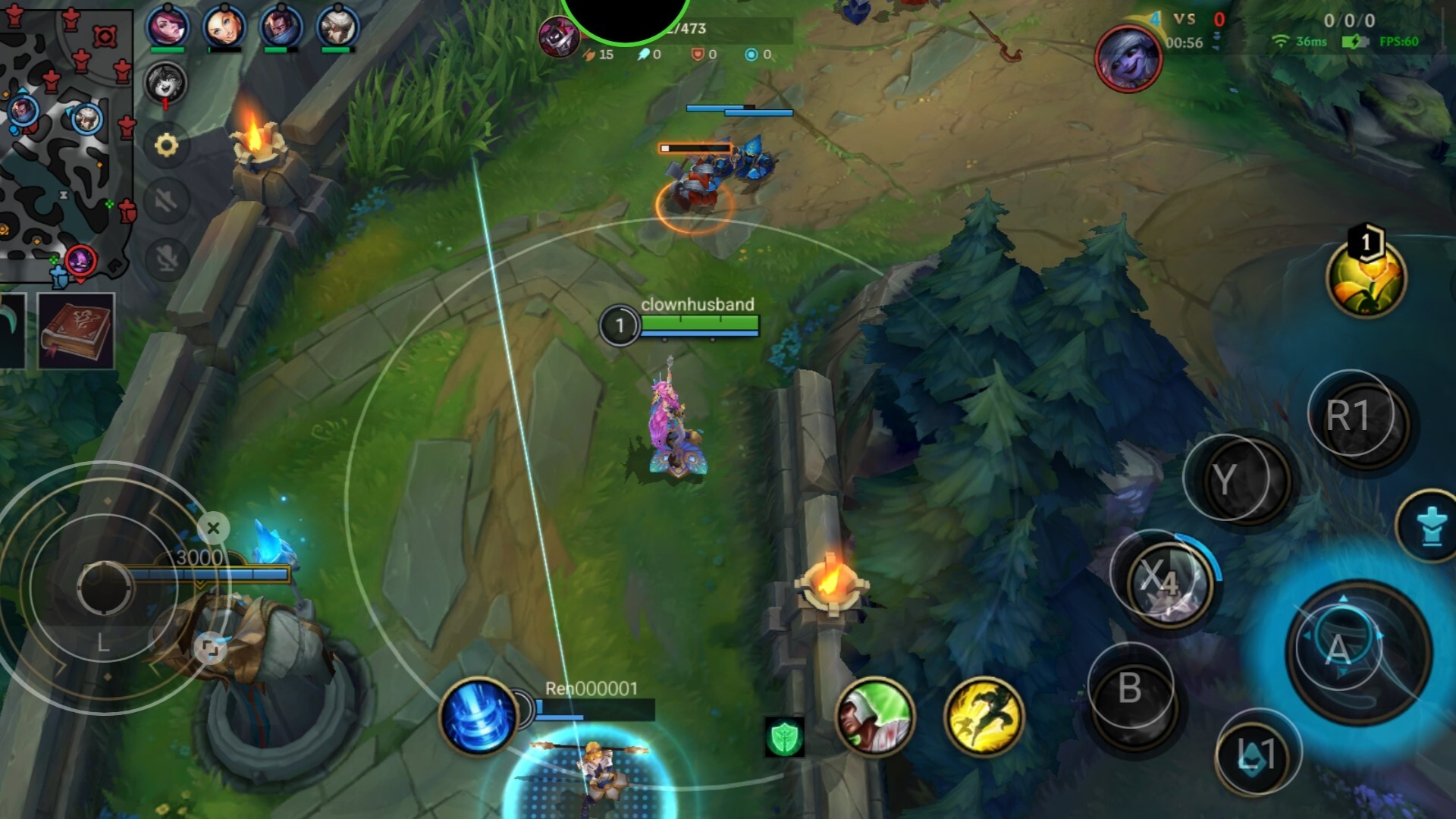
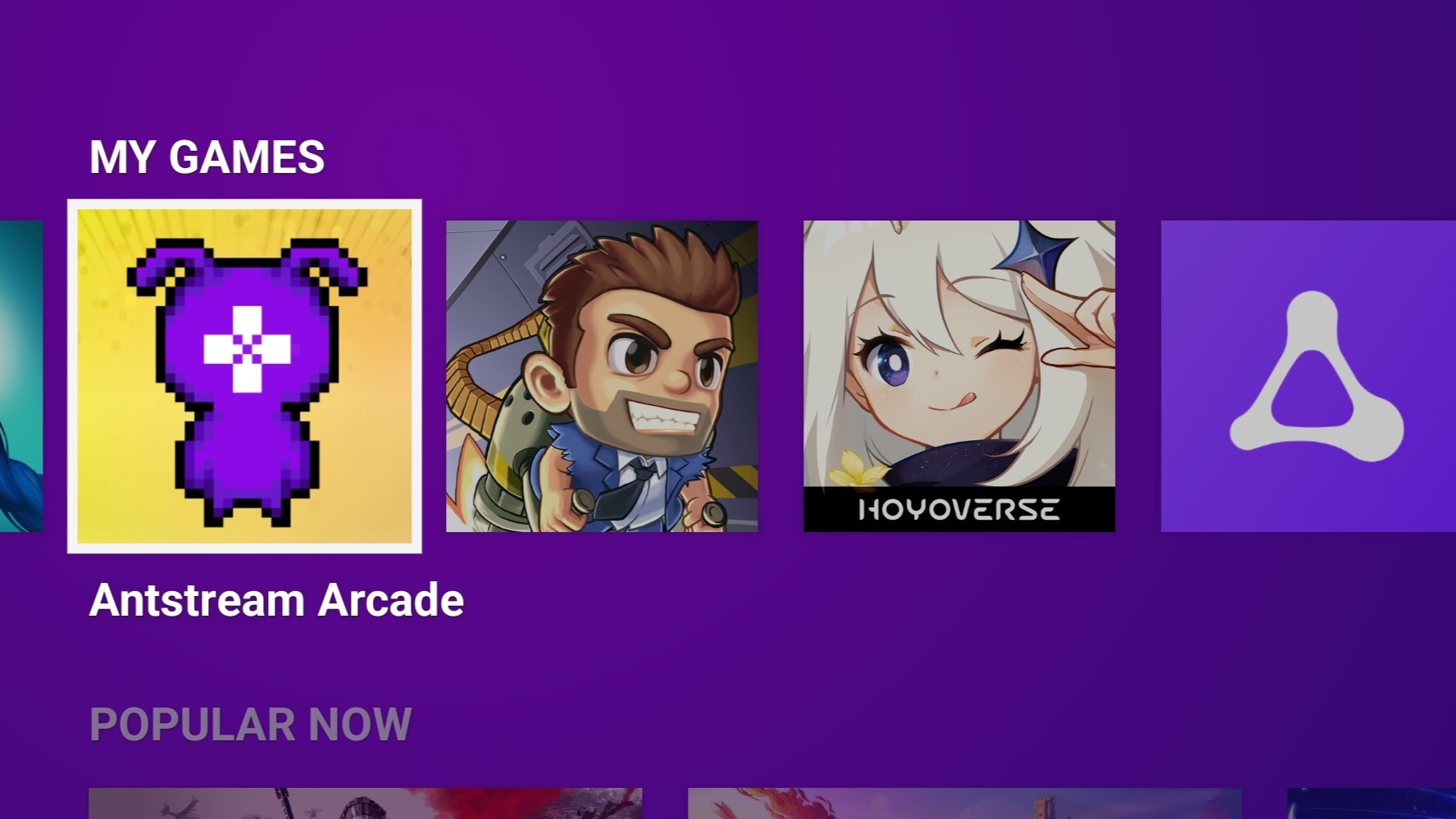
The app also offers a range of calibration settings, RGB customization, and basic button remapping for the two additional inputs. By far the most impressive feature it offers is the virtual controller mode, however, which allows you to map various controller inputs to certain points on the screen. This means that you can use the controller to play games that don’t offer any dedicated controller support, such as the hugely popular League of Legends: Wild Rift. The setup process was a little fiddly, requiring a lot of experimentation to find the right layout, but it worked very well once configured.
Although it's sadly not currently supported by iOS, those playing with an Android device can also make use of the brand-new Razer Sensa HD haptics. They’re powered by a mode that automatically converts game audio into haptic feedback. It isn’t currently supported by many titles, but it leads to surprisingly detailed haptic sensations where it’s offered. Taking the example of Jetpack Joyride, the minigun jetpack created a suitably light buzz while each crashing footstep of the Lil' Stomper powerup conveyed a real sense of weight.
When it comes to performance as a wired PC controller, the Razer Kishi Ultra is adequate. The haptics are still a strong suit, though the overall shape makes PC play awkward. While I wouldn’t advise anyone to go out and buy a Razer Kishi Ultra specifically to use it for PC gaming, it would certainly do in a pinch.
Should I buy the Razer Kishi Ultra?
Buy it if...
You want a high-end mobile gaming experience
The Razer Kishi Ultra is expensive, but it offers by far the best mobile gaming experience on the market right now. Full-size controls paired with comfortable grips and great software make it the best choice.
You use Apple Arcade
The Razer Kishi Ultra is an absolute must if you’re looking for a mobile controller to use with Apple Arcade. Paired with an iPhone 15 or iPad Mini, the experience is simply phenomenal.
Don't buy it if...
You need something sleeker
The only major drawback of the Razer Kishi Ultra is its considerable size. If that’s a concern, you can save a bit of cash by picking up a smaller mobile controller instead.
Also consider
Consider these two alternatives if you want something smaller or considerably more budget-friendly than the Razer Kishi Ultra.
| Row 0 - Cell 0 | Razer Kishi Ultra | Backbone One | GameSir X2s Type-C |
Price | $149.99 / £149.99 / AU$269.95 | $99.99 / £99.99 / AU$179.99 | $45.99 / £49 / AU$69 |
Dimensions | 9.63 in x 4.36 in x 2.53 in | 6.93 in x 3.70 in x 1.34 in | 7 in x 3.32 in x 1.48 in |
Weight | 0.59 lbs / 266 g | 0.30 lbs / 138 g | 0.38 lbs / 171.6 g |
Connection type | Wired (Type-C) | Wired (Type-C / Lightning) | Wired (Type-C) |
Compatibility | iPhone 15 Series, iPad Mini, Android | iPhone 15 Series, Android / iPhone 14 series and earlier | iPhone 15 Series, Android |
Software | Razer Nexus App (iOS / Android) | Backbone App (iOS / Android) | GameSir App (iOS / Android) |
Backbone One
The Backbone One is older and less comfortable than the Razer Kishi Ultra, but it’s still a great mobile controller. It comes in quite a bit cheaper and is a lot easier to transport, too.
Read our full Backbone One iOS controller review
GameSir X2s Type-C
The GameSir X2s Type-C is the alternative to get if you’re on a tight budget. It’s an affordable mobile controller that performs well, even if the lower price is reflected in the inferior build quality.
Read our full GameSir X2s Type-C mobile controller review
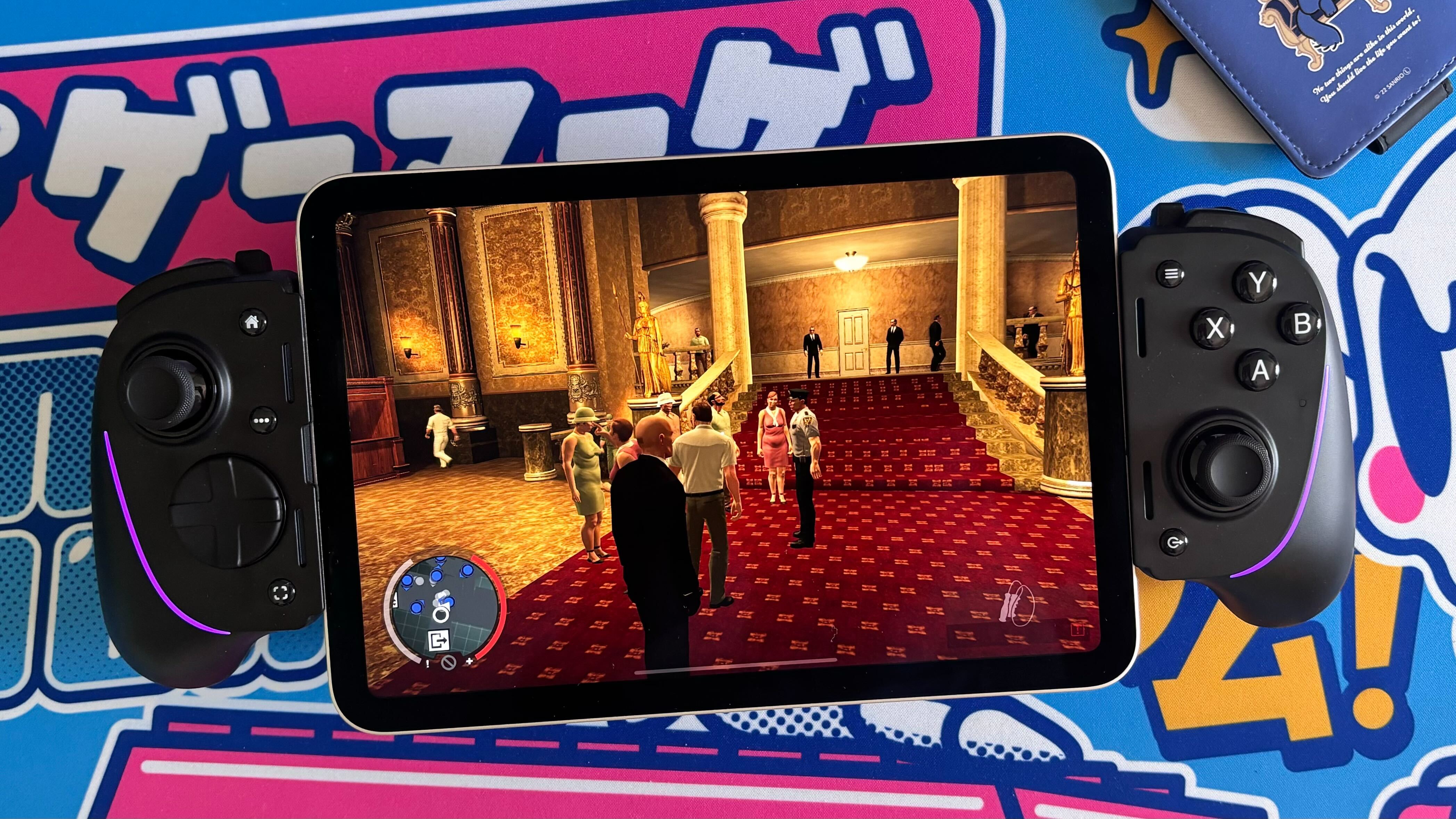
How I tested the Razer Kishi Ultra
- Tested for more than 15 hours
- Tested with a range of devices
- Compared to similar products
I tested the Razer Kishi Ultra for more than 15 hours, using it as my primary mobile controller for almost a month. During that time, I played a wide range of mobile titles and used the controller with multiple devices including an iPad Mini, iPhone 15 Plus, and Samsung Galaxy S23+. In addition to a good selection of native mobile titles, I tried the controller with several game streaming services and a few console emulators. While out and about, I used the controller with a SteelSeries Tusq gaming headset.
I made sure to experience every hardware feature, in addition to everything in the Razer Nexus app. I was also careful to test the controller’s functionality when wired with a PC, using it to play through a significant portion of Like a Dragon Gaiden: The Man Who Erased His Name, where I compared my experience to using other controllers such as the DualSense Wireless Controller and Turtle Beach Stealth Ultra.
First reviewed May 2024

Dash is a technology journalist who covers gaming hardware at TechRadar. Before joining the TechRadar team, he was writing gaming articles for some of the UK's biggest magazines including PLAY, Edge, PC Gamer, and SFX. Now, when he's not getting his greasy little mitts on the newest hardware or gaming gadget, he can be found listening to J-pop or feverishly devouring the latest Nintendo Switch otome.
